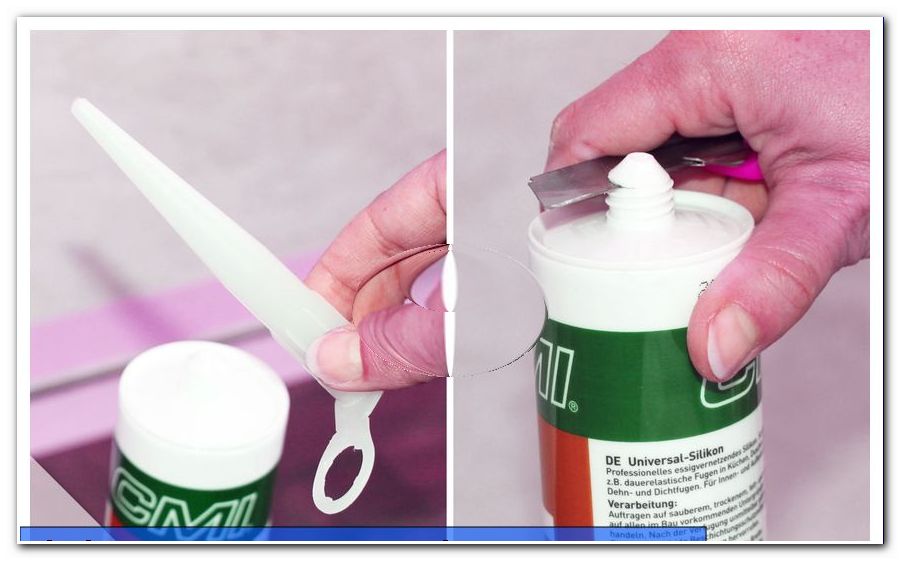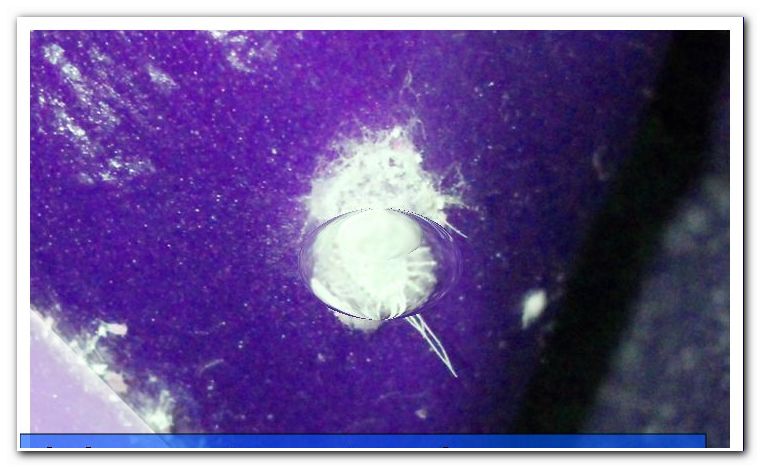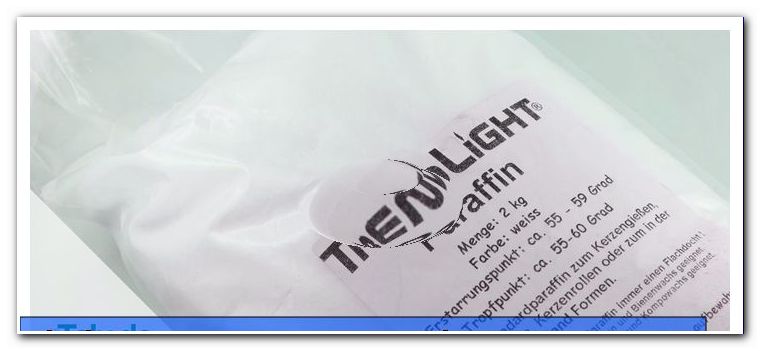Pampas grass - Information about planting time, care and pruning

- About pampas grass
- Beautiful varieties
- Soil, location and environment
- Plants and multiply
- Maintain and cut
- overwinter
- Diseases and pests
Pampas grass is one of the most popular types of grass in native gardens. The large clumps with the impressive flower spikes are an eye-catcher, no matter if they stand as solitaire in a meadow in a central place or among other grasses and perennials in the bed. For many garden friends Pampasgras is considered a bit difficult, so you may not see the big grasses so often. However, looking at the original home, the South American pampa, it is clear that the grass must be quite hard. In South America, plants need to cope with dry, hot summers as well as cold winters.
The pampas grass, botanically Cortaderia selloana, belongs to the grasses and is a perennial, herbaceous plant that forms dense clumps. The grass itself is up to about a meter high. But with the long flower spikes a height of up to three meters is possible. These panicles may have a silver-white, more rarely a yellowish, reddish or purple color depending on the variety. The flowering period lasts from August to November and differs for each variety.
- Growth height - leaves about 1 m, with flower fronds up to 3 m
- Flower color silver-white, pink, reddish to purple, cream yellow
- Shoots from April
- Bloom from late July to frost
- wintergreen
- Frost resistant with appropriate treatment
About pampas grass
Beautiful varieties
- 'Sunningdale Silver' - silver white, large flower flares, 90 to 250 cm high, flowering from August to frost, one of the most compact and winter hardiest varieties
- 'Pumila' - creamy white, erect flower spikes, 100 to 150 cm high, flowering from September to October, very compact clumps and very hardy
- 'Citaro' - white-yellow fronds, 200 to 250 cm high, flowering in September until frosty, hardy in mild winters, otherwise protect something
- 'Lilliput' - small grass, creamy white flowers from August to October, 80 to 120 cm high, ideal for small gardens and planters,
- 'Silver Comet' - green-white-leaved, cream-colored flower fronds, 100 to 180 cm high, late flowering, from September to frost
- 'Rosea' - strongly pink to pink flower fronds, 160 to 180 cm high, flowering from September to November
- 'Rosa Feder' - loose pink fronds, flowering from September to November, 180 to 200 cm high
- 'Rendatleri' - pink to violet-colored fronds from August to September, 90 to 250 cm high
- 'Compacta' - beige, cream to yellowish-white flowers, only 50 to 120 cm high, flowering from September to October
 tip
tip
What many do not know is that only female Pampasgras develops the large flower abundance. The plants are dioecious, which means they have male and female flowers on different plants, so they are either male or female. In male Pampasgras the flower stalks usually fall apart and there are not many of them. In the female Pampasgras the flowering is noticeably more lush and the flower stalks fall far less apart. When buying, you should pay attention to plants that have been vegetatively propagated by female plants.
Attention
Pampas grass grows big and needs a lot of space. It has one drawback, namely the sharp leaf margins. At which one can cut themselves efficiently. Since the leaves usually grow overhanging to the outside, enough space must be planned all around, so that you do not come into contact with the leaf margins when passing.
Soil, location and environment
In South America pampas grass thrives mainly on sandy or Schwemmboden. Because of the sparse vegetation, the plants are mainly in the blazing sun. They are not demanding and get along completely without care. Pampas grass is tough. It must not be too wet, loamy soil is unfavorable. It is important that the surface is permeable, that excess water can drain off quickly. For clayey soil, a built-in drainage is recommended.
- Sunny location, half shade at the most, full sun is better, otherwise the plants can not fully develop the flower
- Sheltered
- Rather dry, fresh to sandy soil
- Favorable are humus and nutrient-rich soils
- No standing wet - treat drainage or soil with sand
- Remove weeds around regularly
tip
Pampas grass is suitable as a container plant when the vessel is large enough, both from the circumference, as well as from the depth. Most plants remain smaller than if they can grow freely. The plant substrate must be permeable and nutritious. When hibernating is important that the bucket does not freeze. He should be very protected and packed. Since large planted vessels are heavy, it makes sense to put the bucket equal to a plant scooter. So it can be easily transported and converted.
Most garden owners prefer pampas grass as a solitaire, as an absolute eye-catcher, often in the middle of the lawn. However, the large grasses also appear in the group, slightly offset or planted in rows. Important is sufficient planting distance. If several of the grasses are planted, pay attention to the same varieties. Different flower colors and different sized plants together look less good than if they all have one size and the same flower fronds. Particularly advantageous is the grass against a dark background, for example, a hedge of evergreen woody plants that still have leaves in October and November. As companion plants are other grasses, perennials, mainly wild shrubs and mullein, which harmonize tone on tone with the large grass.
Plants and multiply
Experts recommend planting pampas grass only in spring. Thus, until late autumn and winter, the clumps have enough time to root properly and recharge their batteries, and then survive the winter unscathed. Too late used grasses can be damaged in harder winters, up to total failure. The right time is after the Eisheiligen, if no late frosts threaten more.
The most important thing when planting is the preparation of the soil. It must not be too clayey. These soils store too much moisture in winter and that is mostly deadly to pampas grass roots. The grasses do not freeze, as is often assumed, the roots rot and in combination with frost, this is deadly. The soil must therefore be mixed with sufficient sand and humus. The planting hole should be about 40 cm deep, a drainage must be installed, a little deeper. As drainage gravel, perlite, expanded clay, potsherds or simply small stones, as they are repeatedly promoted in gardening suitable. Place the clumps in a bucket of water so that they can properly soak. If there are no more bubbles, they can be planted. Then insert the clumps and fill up the soil and press firmly, do not stall.

- Spring planting recommended, just after the Eisheiligen
- Good soil preparation is important, no loamy soil, which stores too much moisture in winter
- Mix in the sand and humus
- Planting hole about 40 cm deep
- If necessary, install drainage
- Planting distance 120 cm, at least for the normal sized varieties
- Form a casting ring at the end and pound the grass
A rhizome barrier is actually not necessary because pampas grass grows horstig and does not spread through rhizomes or foothills. The clumps, however, can take stately proportions. Over the years, they become really powerful. If you want to limit this, then it is recommended to have a rhizome barrier. Alternatively, it is also possible to excavate and divide large clumps. As a result, however, once lost the beautiful roundish shape.
- Possibly. Use rhizome barrier
If you want to save the rather high expenditure for the purchase, you can also sow pampas grass. There are seeds in the trade. Can be sown directly in the field, where the grass should be or in a container, even in the bucket, for which it is intended. For germination temperatures above 20 ° C are required, if possible also at night. The plant substrate should be kept slightly moist evenly. Bright sun is to be avoided.
- Sow at temperatures above 20 ° C
- Keep slightly damp at the same time
- No glaring sun, only morning and evening sun
In addition, the rhizome can be shared. Especially if the clumps are too big, it is convenient to take them out of the ground and divide. That makes sense, too, if they have become lazy. The best time for this is right after pruning in spring. Although the flower may fail for a year or be reduced, but the clumps grow well again until the fall. It is also often recommended to divide only in the fall, after flowering, but I can not recommend that. The division followed by frost is not good. In addition, the plants lose the protection through the many leaves.
Maintain and cut
Once grown, pampas grass is extremely easy to care for. Until then it should be watered regularly. Even later, the grass is happy every now and then about a watering. The floor should not be permanently wet. Dryness tolerates Pampasgras in the normal framework, the roots should not completely dry out. Regular watering has a positive effect on flowering, both on the size of the fronds and the amount.
Fertilizing makes sense. Anyone who gives compost in the planting hole while planting, thus ensures a natural start fertilization. After a few weeks, the nutrients are consumed, then should be re-fertilized. If the grass does not grow and no flowers begin, should be provided quickly replenishment. Mineral fertilizer works immediately, but you must not use too much of it, otherwise it has more adverse effect and can burn the roots. When fertilizing regularly, organic fertilizer is sufficient. It takes a while for the soil creatures to transform it so the plant can pick it up, but overdosing is almost impossible.
- Water until it grows regularly
- Even later, regular watering will have a positive effect - more and larger flower fronds
- Do not let dry out too long
- No permanent wetness
- Start fertilization with compost, alternatively horn meal
- Later organic fertilizer, about every 6 weeks
- In case of nutrient deficiency use mineral fertilizer, but do not overdose
- Treat the container with liquid fertilizer approximately every 14 days.
Pampas grass is cut only in spring. Everything that is brown is cut off. Even the outer leaves, which just do not look so good, can be easily cut away. It is important to cut as far as possible at the bottom of the shoot. It is also possible to cut down the entire nest to 10 to 15 cm.
Watch out, the sharp edges of leaves can cause quite a bit of cuts and injuries. Wear the best high and above all solid gloves. Also pay attention to the new shoots. They should not be damaged.
overwinter
Hibernation is the only thing that can cause problems when the winter is very wet and chilly. However, there is a lot that can be done to help the plants. This includes not cutting the grass in the fall. When the fronds become more unsightly in the fall or after the first frosts, they are simply tied together, and the long blades of grass are picked up and tied together. So is the heart of the plant, the inside of the nest protected from too much moisture. In addition, the floor can still be covered with brushwood, straw or leaves around, so that even from the outside so much moisture does not come through. So protected, the pampas grass should survive the winter easily. At the same time, both the plant itself, but also the cover all around small animals provide a shelter for the cold season.

- Tie up the fronds
- It is best to take the stalks together and tie them up
- Cover the floor all around to protect it from moisture
Buckets need to be specially protected. They should be placed close to a warm house wall and very sheltered, preferably under a roof overhang. It is ideal to place the vessel on one, better two layers of polystyrene or a block of wood. In addition, you should wrap the pot all around with bubble wrap or thick reed or coconut mats. Under no circumstances should rain penetrate and keep the soil evenly moist. Instead, every now and then, when the site is dry and frost-free, it must be poured. Keep in mind, the lower the temperatures, the less water is needed.
- Place bucket protected, under eaves and on polystyrene
- Wrap around thick outside
- If necessary, do not keep it steady
- Do not fertilize
Pampas grass also offers an interesting sight in winter. The tied up fronds are coated with hoop an absolute highlight. The shrub is compact and interesting even in winter and is a good source of information.
Diseases and pests
Diseases and pests hardly ever occur. What the plants can not tolerate is wetness. Then the Wuzeln rot and usually there is no rescue. However, this can be avoided with the appropriate location, expert planting and good care.
Pampas grass is a great plant for the garden. It needs space, but has a sensational effect. If you do not have enough room, you should opt for a smaller variety. When buying make sure to catch a female plant if possible. Nurseries that multiply themselves are the best contacts. Otherwise, a sheltered location is favorable and a good soil condition, so that the grass thrives well.




